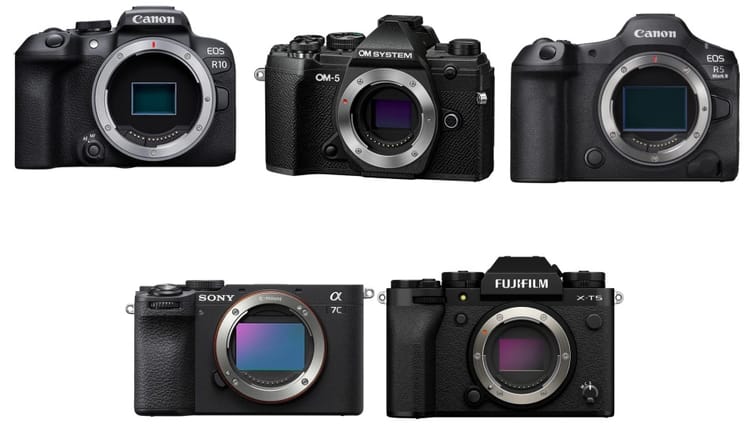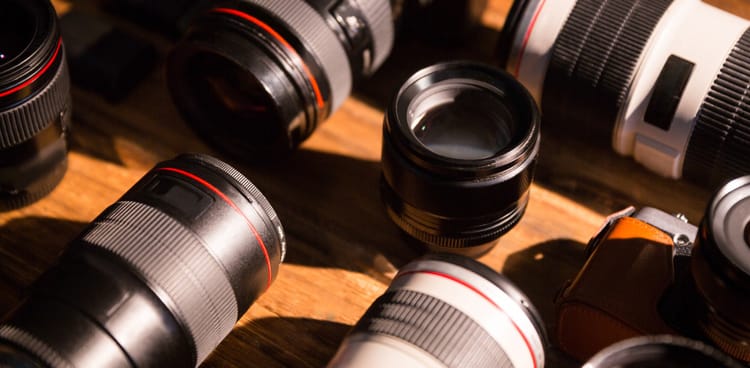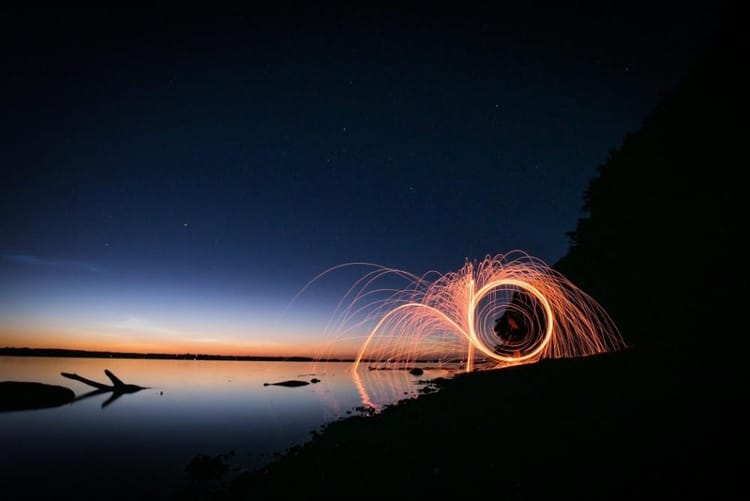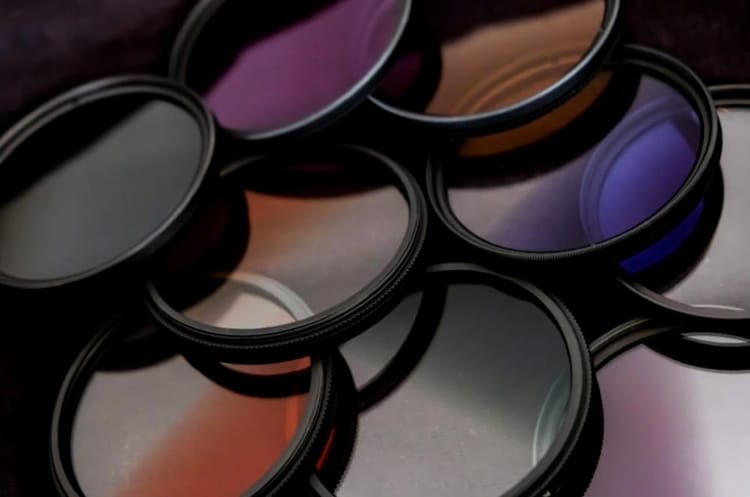Food Photography Ideas to Boost Your Portfolio
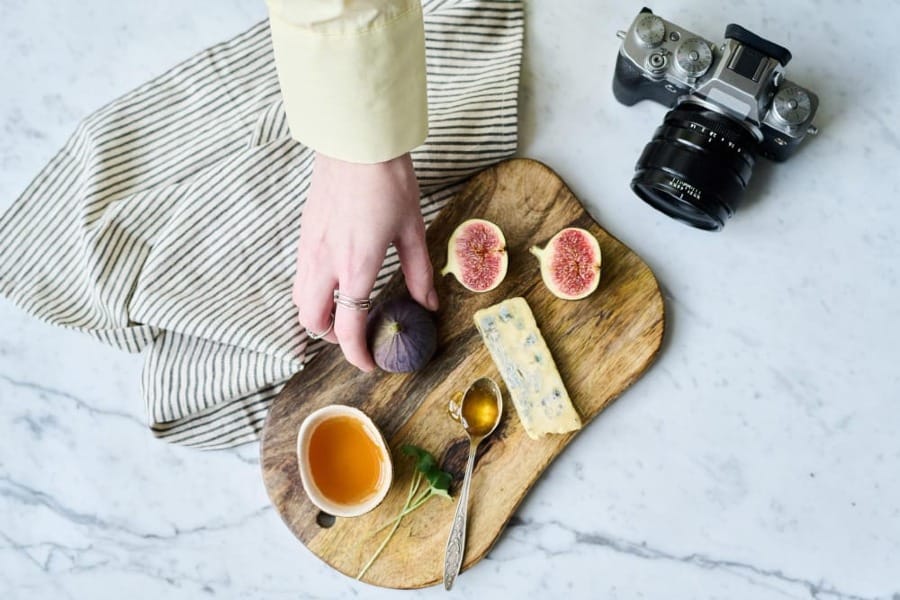
Introduction: Elevate Your Portfolio with Creative Food Photography
In the realm of food photography, there’s a constant demand for fresh, eye-catching visuals that not only showcase culinary artistry but also tell a story. Incorporating innovative food photography ideas into your portfolio can be the difference between images that merely satisfy and those that captivate. Building a portfolio with diverse and dynamic compositions will spotlight your ability to adapt and experiment with various styles, lighting techniques, and props.
Aspiring photographers often overlook how profoundly a creative approach can transform even the simplest dish into a work of art. By exploring unique angles, playful color palettes, and mood-driven compositions, you can bring out the essence of each dish, creating images that linger in the viewer’s memory. Investing time in refining your style with distinct food photography ideas will not only set you apart but also showcase your versatility, attracting potential clients who crave authenticity and artistry.
Affiliate Disclaimer
This blog post may include links to affiliate sites. If you click on an affiliate link and make a purchase, we may earn a small commission or receive other compensation at no extra cost to you. Please note that many of the links on our site are affiliate links. Our use of these links does not impact the products, services, or websites we recommend to you. This disclaimer covers all forms of communication with you, including our website, email, phone, social media, products, and other platforms.
Make the Most of Natural Light to Create Stunning Visuals
Natural light is a powerful tool in food photography. It enhances colors, brings out textures, and gives your images a naturally appealing look that artificial lighting can struggle to replicate. When thinking about food photography ideas, understanding how to work with natural light can elevate your images, making them feel vibrant and authentic. The way light interacts with food has the power to transform even the simplest shot into a stunning visual.
Find the Perfect Light Source
Using a large window as your primary light source often yields the best results. North-facing windows are ideal because they offer soft, even lighting throughout the day. If you don’t have a north-facing window, focus on morning or late afternoon light, which tends to be softer and more flattering. Midday sunlight, while harsh, can still be used effectively with a few adjustments. To soften strong sunlight, try diffusing it with a sheer curtain or thin white cloth, creating a gentle glow over the food without harsh shadows.
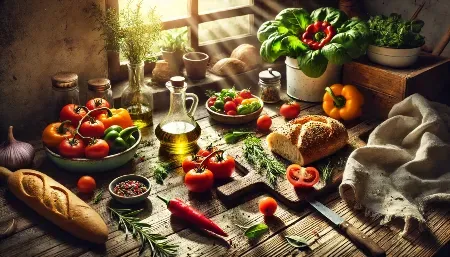
Experiment with Shadows and Reflections
Natural light allows you to experiment with shadows, adding depth and mood to your images. Shadows can bring out a food’s texture, emphasize the structure of ingredients, and make the composition feel more dynamic. Position the light source to the side of the food, or even slightly behind, to create interesting shadow patterns and enhance the dimensionality of the scene. Using a reflector on the opposite side of the light can help soften shadows without eliminating them, striking the perfect balance between light and dark.
Adjust Angles and Proximity for Different Effects
Small changes in the angle or distance of your setup from the light source can dramatically alter the outcome. For example, a close setup to the light will make the food appear bright and vibrant, which is perfect for fresh salads, fruits, or desserts. Moving further away from the light softens the scene, creating a moodier look that can work wonderfully for comfort foods like soups or stews. Play with these subtle adjustments to bring out the best qualities of each dish.
Consider Time of Day for Best Results
Natural light changes dramatically over the course of the day. Morning light is typically soft and cool, ideal for lighter, refreshing compositions. Late afternoon brings a warm, golden hue, which can add warmth and richness to the shot, especially when photographing foods with earthy tones. Planning your shoot around the time of day allows you to maximize the beauty of natural light, ensuring your portfolio captures the full spectrum of food photography ideas and styles.
Play with Color Palettes to Make Your Images Pop
In food photography, color can be a game-changer. When used thoughtfully, color palettes don’t just complement the dish—they enhance its appeal and draw viewers into the shot. Exploring vibrant, harmonious, or contrasting color schemes is one of the most effective food photography ideas to make your images stand out. By carefully selecting colors that either balance or contrast with the food, you can add depth, energy, and personality to each image.
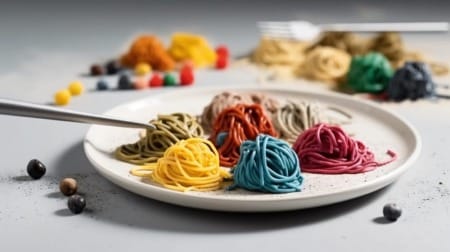
Experiment with Complementary Colors
Complementary colors—those opposite each other on the color wheel—are a powerful choice for creating contrast. Imagine a bowl of warm, golden soup against a deep blue background; the two hues amplify each other, making the dish appear richer and more inviting. This principle works especially well for simple dishes where you want to heighten the food’s visual impact without cluttering the image. Experimenting with complementary colors in your food photography ideas will allow you to emphasize the food’s textures and details while maintaining a clean, balanced composition.
Use Tone-on-Tone for a Subtle, Elegant Look
For a softer, more cohesive aesthetic, tone-on-tone color palettes can be very effective. Tone-on-tone involves using shades of the same color family, creating a monochromatic feel that’s both stylish and harmonious. This approach is ideal for those looking to achieve a minimalist style or emphasize intricate textures. For instance, a green salad styled with different green elements—herbs, avocado, cucumber—against a light green background offers a refined and subtle presentation. Tone-on-tone palettes are among the more sophisticated food photography ideas, lending a natural elegance to your images.
Add Pops of Color to Create Focal Points
One or two pops of contrasting color can transform a neutral image, drawing the eye directly to the most appealing part of the composition. For example, a sprinkle of red chili flakes on a white plate of pasta or a handful of bright berries on a neutral table setup adds vibrancy without overwhelming the scene. This technique works well when you want to keep the overall mood subdued but still crave a touch of excitement. When brainstorming food photography ideas, adding small but bold accents can be the perfect finishing touch for an otherwise simple scene.
Use Backgrounds and Props to Enhance Color Harmony
The colors of backgrounds, props, and accessories should support, not compete with, the dish. For example, using earthy, natural colors like browns and greens can enhance a rustic dish, while cooler tones like grays and blues work well for seafood or fresh produce. Thoughtfully chosen props like linens, plates, and utensils allow you to build a cohesive color story around the food, adding layers of interest without detracting from the main subject.
Experiment with Unique Angles for Fresh Perspectives
In the art of food photography, experimenting with unique angles is one of the simplest yet most impactful ways to add interest and creativity to your shots. While traditional angles like the straight-on view or overhead flat lay have their place, exploring alternative perspectives can elevate your images, setting your work apart and adding depth to your portfolio. Playing with unusual angles is among the most versatile food photography ideas for creating distinctive, memorable visuals that capture the viewer’s attention.
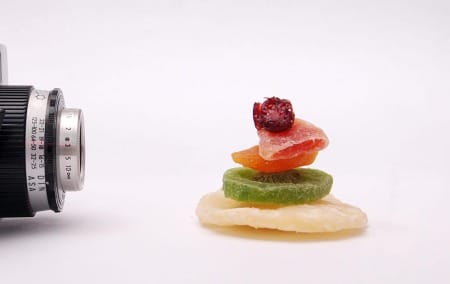
Go Overhead for a Clean and Organized Look
Overhead shots, or flat lays, provide a comprehensive view that works exceptionally well for dishes with intricate plating or multiple components. They allow for a balanced, orderly layout, making them ideal for flat arrangements such as charcuterie boards, pastries, or breakfast spreads. This angle brings out patterns and colors, especially when shooting a series of dishes. To enhance the overhead perspective, keep props and elements balanced and harmonious, maintaining symmetry where possible to create a visually satisfying composition.
Try a 45-Degree Angle for a Dining Experience Feel
A 45-degree angle captures food from a natural, inviting perspective. It’s as though the viewer is about to dig into the dish themselves, evoking an intimate, relatable feel. This angle is particularly effective for plated meals where height is a factor, such as layered cakes, burgers, or stacked salads. It captures both the top and sides, offering dimension without losing details. For photographers searching for approachable yet dynamic food photography ideas, the 45-degree angle achieves a balance between art and realism, allowing the viewer to experience the dish as they would in person.
Get Up Close to Showcase Texture and Detail
When it comes to making a dish look irresistible, focusing on close-ups is essential. This approach highlights the smallest details, like the crumb of bread, the glisten of a sauce, or the texture of fresh herbs. Close-up shots allow you to convey the sensory elements of the dish—its crispiness, creaminess, or freshness. Zooming in creates a sense of intimacy, immersing the viewer in the moment and making the food appear almost tangible. Using a macro lens or simply getting closer to the subject can add incredible depth and appeal.
Go Low for Dramatic, Heroic Shots
For a bold, dramatic feel, a low-angle shot—often close to the table level—can give the food a “heroic” quality. This perspective is especially powerful for tall or layered dishes, like stacked pancakes or towering sandwiches, as it emphasizes the height and grandeur of the subject. Shooting from below draws attention to the structure and makes the dish appear larger than life, adding a bit of storytelling to the shot. This technique is perfect for food photography ideas focused on creating powerful, statement images that leave an impact.
Play with Tilted Angles for an Artistic Touch
Adding a slight tilt or rotation can infuse a sense of movement or spontaneity into the photo. A tilted angle can make the shot feel playful and contemporary, as it deviates from standard compositions. This style works particularly well for creative food arrangements, like styled flat lays or dishes with vibrant colors. By stepping away from traditional angles, you can create artistic compositions that feel fresh and modern, making this one of the more experimental food photography ideas for those seeking to push boundaries.
Experimenting with these unique angles can bring a fresh, innovative quality to your food photography, making each shot more than just a visual record of a dish—it becomes an experience in itself.
Capture the Seasons: Adding Freshness to Your Portfolio
Seasonal food photography captures the essence of each time of year, breathing life and relevance into your portfolio. By weaving the beauty of changing seasons into your images, you create visual stories that resonate with viewers on a deeper, more emotional level. Exploring seasonal food photography ideas not only keeps your portfolio fresh but also demonstrates versatility, allowing you to align your work with holidays, local ingredients, and seasonal moods.

Embrace Seasonal Ingredients for Authenticity
Nothing speaks of seasonality quite like ingredients that are at their peak freshness. Spring brings a bounty of fresh greens and delicate herbs, while summer overflows with colorful berries and juicy stone fruits. Fall arrives with earthy squash, pumpkins, and hearty root vegetables, while winter brings vibrant citrus and warm spices. Capturing dishes featuring these seasonal ingredients instantly evokes a sense of time and place, grounding the image in the viewer's memory. Not only does this approach add authenticity to your food photography, but it also helps convey the unique flavors and textures that each season offers.
Incorporate Nature-Inspired Props for Enhanced Storytelling
Props are powerful tools in seasonal food photography. Rustic wood boards, leafy greens, wildflowers, and autumn leaves can add a natural, organic feel to your images. For instance, placing a handful of cranberries or a sprig of rosemary next to a winter dish enhances the wintry mood, while using fresh blossoms or light-colored linens can amplify the breezy feel of a spring shoot. Choosing seasonally inspired props to complement the food not only adds visual interest but also helps to frame the narrative of the season in a subtle yet effective way.

Create Holiday-Themed Shots for Festive Appeal
Seasonal holidays provide fantastic opportunities to experiment with festive food photography ideas. Think of capturing a Thanksgiving feast, a Christmas dessert spread, or a springtime brunch. By incorporating holiday-specific elements—such as pine cones and ornaments for Christmas or pastel colors for Easter—you create a visually compelling connection to cherished traditions. Holiday-themed shoots allow your audience to connect emotionally with your work, as the imagery reflects familiar celebrations and invoke feelings of nostalgia and joy.
Adjust Lighting to Match the Seasonal Mood
Lighting plays a crucial role in conveying the atmosphere of each season. Natural light filtered through soft, cloudy skies works beautifully for autumn and winter scenes, adding a moody, cozy effect. In contrast, bright, direct sunlight mirrors the energy of spring and summer, making the food appear fresh and vibrant. Experimenting with different lighting setups for each season can elevate your food photography ideas, bringing each dish to life in a way that aligns with the seasonal tone.
Incorporating the seasons into your food photography creates images that feel timely, immersive, and evocative. By capturing the unique characteristics of each season, you’ll add layers of richness and variety to your portfolio, making it a compelling journey through the year’s changing flavors and colors.
Embrace Minimalism for Simple Yet Striking Images
Minimalism is a powerful approach in food photography. Focusing on simplicity places the subject front and center, allowing each detail, texture, and color to shine. Minimalist food photography ideas help create images that are clean, intentional, and striking, conveying elegance without excess. In a world of visual clutter, minimalist compositions captivate the viewer’s eye, making each image feel like a work of art.
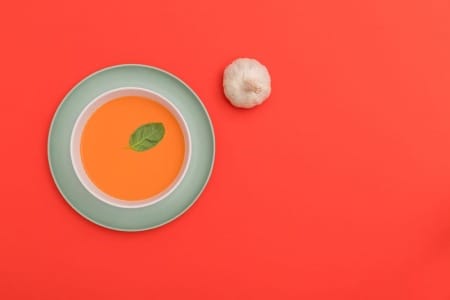
Focus on a Single Subject for Clarity
One of the most effective ways to embrace minimalism is by focusing on a single food item or dish. This approach directs attention to the essence of the subject, whether it’s a perfectly frosted cupcake, a vibrant salad, or a steaming cup of coffee. By isolating the main subject, you allow its colors, textures, and shapes to command the frame without distractions. This clarity in composition not only simplifies the image but also emphasizes the beauty and appeal of the food itself, resulting in an impactful shot.
Use Negative Space for Balance and Drama
Negative space is a key element in minimalist food photography. By intentionally leaving parts of the frame empty, you create balance and draw the viewer’s eye toward the main subject. Negative space adds breathing room, making the composition feel open and less cluttered. Whether it’s a blank background or a clean tabletop, using negative space allows you to craft food photography ideas that feel modern and refined. This technique also adds a touch of drama, letting the subject “pop” within the composition, which can be especially striking with bold colors or textured foods.
Stick to Neutral Backgrounds for a Timeless Look
Minimalist food photography often benefits from neutral backgrounds, which lend an understated elegance to each shot. Simple white, gray, or earthy tones create a timeless look, making the food the undisputed star of the image. Neutral backgrounds are versatile and work well for a variety of food items, enhancing without competing. They offer a subtle foundation that lets each detail stand out, whether it’s the crisp crust of a loaf of bread or the smooth surface of a chocolate truffle.
Carefully Select Props to Avoid Clutter
Minimalism doesn’t mean avoiding props altogether; rather, it’s about using them sparingly and thoughtfully. A simple napkin, a single fork, or a rustic plate can add character and context without overwhelming the scene. The key is to choose props that complement the food and match the overall aesthetic. Carefully curated props allow you to tell a story while preserving the simplicity and elegance of the minimalist approach.
Embracing minimalism in food photography creates images that are both visually stunning and deeply focused. With clean compositions, intentional use of space, and a refined selection of elements, these minimalist food photography ideas help bring out the beauty of each dish in a timeless, captivating way.
Add Movement and Action to Bring Photos to Life
In food photography, capturing movement can transform a static image into a vibrant, immersive experience. Movement adds energy, spontaneity, and realism, inviting the viewer to engage more deeply with the image. While traditional food photography focuses on still compositions, incorporating movement has become one of the most exciting food photography ideas to create dynamic, memorable visuals.
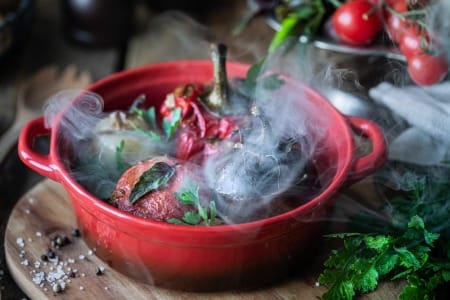
Create Action with Pouring and Sprinkling
One of the simplest ways to add movement to a shot is by capturing a pour or sprinkle in action. Imagine drizzling syrup over a stack of pancakes or sprinkling powdered sugar over a cake—these small actions bring a sense of immediacy and interaction to the image. A pouring shot can emphasize texture, like the gloss of a rich chocolate sauce or the frothy stream of milk. When working with sprinkles, such as herbs, spices, or cheese, the particles caught mid-air add a playful touch and suggest freshness. This technique not only adds visual interest but also captures the essence of the food’s flavor and preparation.
Use Motion Blur to Suggest Energy and Movement
Incorporating motion blur is another technique to infuse energy into food photography. While many photographers strive for sharpness, a subtle blur can actually enhance the feeling of movement. For instance, the sweep of a hand whisking ingredients, the rotation of a mixing spoon, or the motion of noodles being twirled on a fork all benefit from a hint of blur. It suggests that something is happening at the moment, inviting the viewer into the action. Experimenting with slower shutter speeds can help you achieve this effect, adding a sense of authenticity and liveliness to your food photography ideas.
Capture Steam and Smoke for a Warm, Fresh Appeal
Few things evoke the warmth and aroma of freshly cooked food, like visible steam or smoke. This kind of movement, though subtle, adds depth and sensation to the shot. Steam rising from a hot cup of coffee or freshly baked bread suggests warmth and comfort, pulling the viewer in as if they could feel the heat. To capture steam, keep the background dark or neutral, as it highlights the wispy trails and adds contrast. Timing and patience are key—capturing that perfect moment when steam is visible but not overwhelming takes practice but is well worth the effort.
Experiment with Tools to Make the Scene More Interactive
Props like hands, utensils, and even natural elements can add movement without overpowering the food. For instance, a hand reaching for a cookie or a spoon stirring soup adds a human touch, making the scene feel interactive and accessible. Including these elements can bridge the gap between food and viewer, enhancing the storytelling element of your food photography ideas. Whether it’s a forklifting pasta or a glass being set down, these small touches create a sense of engagement and bring the food to life.
Adding movement to food photography breathes excitement into each shot, transforming a simple image into a sensory experience. With techniques that play with pouring, motion blur, steam, and interactive props, you can capture the essence of each dish in a way that feels immediate, tactile, and enticing.
Edit with Care to Perfect Your Final Shots
Editing is where a good food photograph can become extraordinary. With careful adjustments, you can enhance colors, emphasize textures, and bring out the natural beauty of each ingredient. However, restraint is key; editing should polish the image without detracting from the food itself. Thoughtful post-processing can bring your food photography ideas to life, transforming raw shots into visually compelling pieces that look both appetizing and authentic.
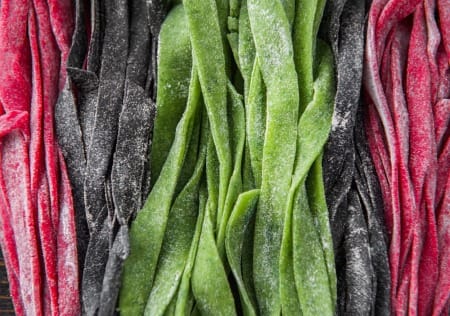
Begin with Subtle Color Corrections for Realism
Color is one of the first elements to adjust in food photography. Slight color correction can make an enormous difference, ensuring that hues look natural and true to life. Start by tweaking the white balance to balance warm or cool tones, especially under natural lighting. For example, warm up a shot of a winter stew or cool down a fresh summer salad to convey the intended mood. Adjust saturation carefully to avoid an artificial look, enhancing only the key colors that make the dish pop without overpowering the viewer. This is one of the most effective food photography ideas for elevating an image without straying from authenticity.
Enhance Textures to Add Depth and Appeal
The texture is fundamental in food photography—it makes the viewer practically taste the crispness of a crust or the creaminess of a sauce. By using the sharpening tool sparingly, you can highlight the fine details that bring the dish to life. For example, enhancing the texture of a pastry’s flaky layers or the granular appearance of a sprinkle of salt can add depth and make the image feel almost tangible. Pay attention to where textures naturally appear in the food and focus on enhancing those areas to create a balanced, inviting composition.
Adjust Exposure for Balanced Light and Shadow
Light and shadow play a significant role in creating mood and drawing attention to specific parts of the dish. Adjusting exposure, contrast, and highlights can help bring out a sense of dimension and drama. Brighten areas where you want to focus, like the glossy surface of a sauce, and deepen shadows to add richness without losing detail. Soft adjustments to exposure can elevate food photography ideas by balancing brightness without making the image look flat or overexposed.
Use Selective Editing for a Tailored Finish
Selective editing allows you to fine-tune specific areas without altering the entire image. Tools like radial filters, adjustment brushes, and gradient filters can highlight certain elements or reduce distractions. For instance, using a radial filter to subtly brighten the main subject or a brush to soften background props can guide the viewer’s eye naturally. This targeted approach can refine the image, helping each element find its place in the composition while maintaining an organic feel.
Maintain Consistency for a Cohesive Portfolio
When editing, aim to develop a signature style that lends consistency across your portfolio. This doesn’t mean every image should look identical, but a cohesive color palette, lighting, and tone can create a recognizable visual identity. Experiment with different styles while refining your food photography ideas, but always prioritize consistency to make your work feel unified and professional.
Editing with a careful hand enhances your images while preserving the integrity of the food. By making subtle adjustments to color, texture, and light and using selective tools, you can create polished, inviting photographs that capture the essence of each dish.
Conclusion: Put These Ideas into Action
With these food photography ideas at your fingertips, it’s time to put your creativity into practice and bring new life to your portfolio. Experimenting with light, color, movement, and minimalist compositions allows you to capture each dish with authenticity and flair. Don’t hesitate to step outside your comfort zone—sometimes, the most captivating images come from trying a unique angle or embracing a bold color palette. Each shot presents an opportunity to highlight textures, evoke emotions, and tell a story that resonates with your audience.
By refining your techniques and exploring diverse styles, your portfolio will reflect not only technical skills but also a distinct artistic voice. As you apply these ideas, your photography will evolve, showcasing your unique perspective and passion. So, dive in, explore, and transform ordinary dishes into extraordinary visual experiences that leave a lasting impression.
Thank you for visiting our site and being part of this journey with us! We rely on the generous support of visitors like you to continue providing high-quality. Your donation, no matter the size, helps us maintain the website and create more valuable resources for everyone.

